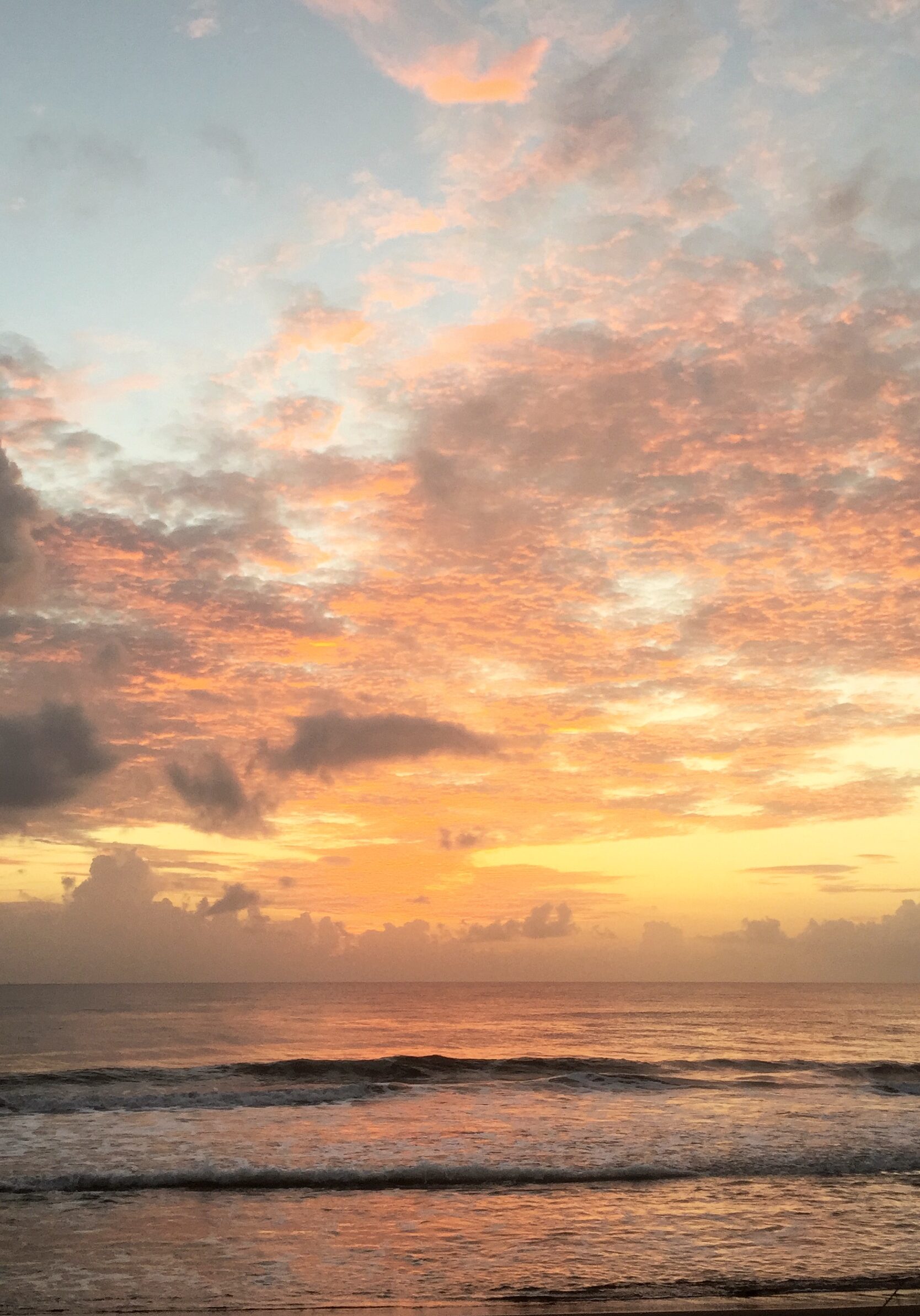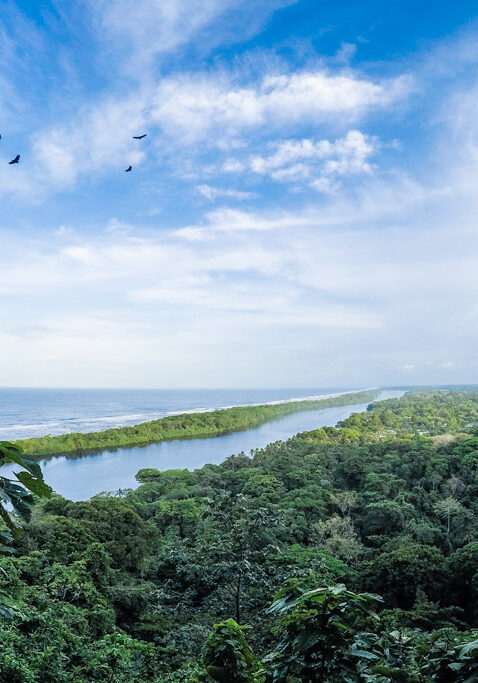
Welcome to Tortuguero
Tortuguero is located in the northern Caribbean of Costa Rica; The village is a strip of land surrounded by the Atlantic Ocean to the east, and the Tortuguero lagoon to the west. To get to the village, there are only 2 ways - by water or by air. It is a small community of 1,500 inhabitants, approximately. The population develops thanks to the tourism that visits the area, which is our main activity. Upon arrival in Tortuguero, you will disembark at the main pier, and just ahead, you will see the main street of 700 meters long. There you can find different services such as: restaurants, sodas, supermarkets, souvenir shops, and at the end of the main street you will find an ATM to withdraw money if you need it.
Recomendaciones durante su visita a Tortuguero:
Do not pay attention to street vendors who try to sell tours and accommodations without any support and with a high probability of fraud, it is advisable to make reservations in advance or wait for the arrival to Tortuguero village to choose between one of the tour operators -as It is our company "Tuanis Tour". It is our obligation to inform and to Kindly help you to ensure that your stay in Tortuguero is the best. If you travel by car, you can leave it parked in "La Pavona". Then you will board the boat, public transport, to Tortuguero. We recommend bringing small suitcases, only with what you need for your stay in Tortuguero, since the boats are small. In most establishments, credit cards or cash in dollars or colones are accepted, however, it is important to take into account that sometimes the ATM is out of service, so it is always better to handle some cash for any emergency.
Tortuguero National Park
The national park is of great international importance, since it is part of the northeast Caribbean Wetland, and it has been a Ramsar site since 1996; It is entirely within the life zone of the very humid tropical forest and has an abundant network of canals, lagoons and rivers that are home to manatees, otters, gaspars, alligators and a variety of freshwater and saltwater fish. The park is home to 442 species of birds, 138 species of mammals and 118 species of reptiles, as well as protecting endangered species such as the Jaguar, the tapir, the white pig, among others. Among its dense vegetation stands the yolillo and royal palm palms, as well as trees such as the almond tree, the sparrowhawk and the sangrillo.
Between the months of March and October Tortuguero beach is a spawning site for 4 of the 7 species of sea turtles that exist in the world: the leatherback turtle, green turtle, hawksbill turtle and sporadically the loggerhead turtle. The hatchling births are in the months of September to December.
Among its main attractions are:
Water trails (canals)
The land trail "El Gavilán"
The Tortuguero beach (the main green turtle spawning beach in the entire western hemisphere)
The land trail of Cerro Tortuguero.

Tortuguero was declared a National Park on September 24, 1970 and its boundaries have been modified three times (1980, 1995 and 1998) with the aim of incorporating more territory. Its extension has increased from 64,701.45 hectares to 76,937 hectares. Of these, 50,284 are marine and 26,653 are terrestrial.
In the case of the land area, 99% is used for the absolute protection of resources and 1% as a site of visitation. The marine area is 100% dedicated to absolute conservation.
The Tortuguero National Park (PNT) is located northeast of the Costa Rican territory and is one of the main tourist icons of Costa Rica because it is internationally recognized for protecting the most important green turtle nesting beach in the Western Hemisphere.
Far from the city and made up of an extensive network of rivers and canals, access is possible only through small boats: this is the Tortuguero National Park, a place different from any other; where the small communities that surround the Protected Wildlife Area, such as Barra del Tortuguero and San Francisco, still preserve their traditions and also enjoy the benefit of having the bicycle as their only means of transport, making the trip a true encounter with the Caribbean culture.
Tortuguero National Park is a paradise for research and ecotourism, the ecosystems of the area are so complex and diverse that the visitor can expect anything in the routes, going from tranquility to meet any of the flora and fauna species characteristics of the Costa Rican Caribbean.
Weather:
In the Tortuguero National Park the humid tropical forest and very humid tropical forest predominate. The average annual rainfall reaches 6,000 mm. The months of greatest precipitation correspond to July and December, the least rainy are March, April and October. The average annual temperature ranges between 25 ° C and 30 ° C. The heat, the humidity and the rain are companions in the route.
Ecological importance:
• Protects beaches for the spawning of 4 species of sea turtles: Green (Chelonia mydas), Baula (Dermochelys coriacea), Hawksbill (Eretmochelys imbricata), Cabezona (Caretta caretta).
• Protects important populations of endangered species.
• Protects the habitat of the manatee (Trichechus manatus), which is one of the scarce and most threatened mammals in Costa Rica.
• Protects the habitat of the largest of the felines in America. Tortuguero has one of the largest populations in Costa Rica and a consolidated research program.
• Protects the ecosystem called Yolillal (Raphia taedigera).
Flora and fauna (identified to the present):
• 734 plant species.
• 442 species of birds.
• 138 species of mammals (101 genera and 32 families).
• 118 reptile species (76 genera and 22 families).
• 58 amphibian species (27 genera and 11 families).
• 460 species of arthropods.
Featured species:
• Green turtle (Chelonia mydas): One of the initial reasons for the creation of the NTP is that this species has Tortuguero as one of the main spawning beaches in the world.
• Green macaw (Ara ambigua): A species of bird in danger of extinction that has been recovering its population with Tortuguero as one of the main nesting and feeding sites.
• Caiman (Caiman cocodilus): Species present along the Tortuguero canals, it is sometimes possible to observe it while sunbathing.
• Black turtle (Rhinoclemmys funerea): One of the Tortuguero river species. In the channels you can get to see several in the same trunk.
• Jacana (Jacana jacana): One of the most colorful species of birds present in the Tortuguero canals.
• Needle duck (Anhinga anhinga): Bird characteristic of the Tortuguero canals, it can be observed on branches drying its wings after submerging to hunt.
Reference:
http://www.sinac.go.cr/EN/ac/acto/pnt/Paginas/default.aspx
Conservation program
The Caribbean Sea Turtle Protection Association (ASOPROTOMA) works hard for the preservation of Tortuguero, the training of the people and the visitor, and community development.
